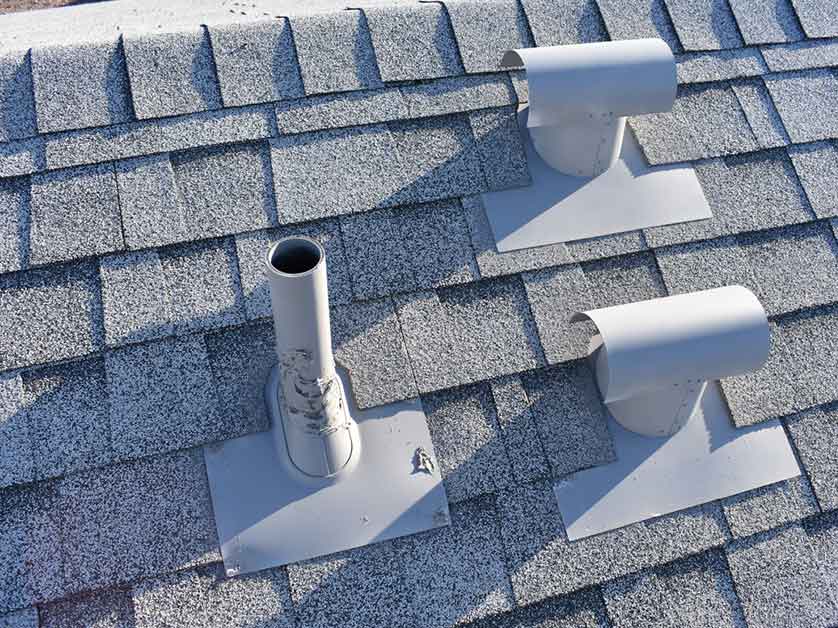Proper attic ventilation is critical in maintaining the health and longevity of your roof, especially in regions with variable weather conditions. A balanced ventilation system not only extends the life of your roof but also helps regulate the temperature within your home, reducing energy bills and preventing moisture-related issues.
In this post, we discuss the different types of vents commonly used in roofing systems.
Ridge Vents
Ridge vents are a form of exhaust vent, seamlessly integrated along the peak of your roof. They run the entire length of the ridge, offering a uniform look while providing excellent ventilation. These vents work on the principle that hot air naturally rises and escapes through the highest point of your attic. In essence, ridge vents facilitate the escape of hot air in summer while minimizing the risk of ice dams in winter.
Soffit Vents
Soffit vents are a common type of intake vent situated in the eaves. These vents draw in fresh, cool air, which then helps push the hot air out through the exhaust vents. Their strategic placement and design are particularly crucial for homes as ample air intake can mitigate heat and moisture buildup.
Box Vents
Also known as louver vents, box vents are another exhaust option typically seen near the top of the roof but not at the peak. They must be spaced evenly to ensure proper hot air expulsion. While not as efficient as ridge vents, they are a cost-effective option for complex roofs with multiple levels and pitches.
Powered Attic Vents
Powered attic vents, either electric or solar, actively draw out stale, hot air from your attic using a motorized fan. Make sure these vents are integrated properly so they don’t undermine your home’s overall energy efficiency.
Gable Vents
Gable vents are crucial for cross-ventilation in the attic. Featured prominently in homes with gabled roofs, these vents add a classic aesthetic while facilitating air movement.
Fascia and Drip Edge Vents
For homes with limited eave space, over-fascia and drip edge vents provide an innovative solution. These vent types are relatively new and work by allowing air to enter at the edge of the roof. They are often incorporated in modern architectural designs, where traditional vents might not work.
Be sure to seek the expertise of a seasoned roofing company to determine the most suitable vents for your home. Jack the Roofer offers tailored advice and installs quality roofing systems to keep your home safe and dry. Call us at (720) 722-2255 or fill out our contact form to schedule an appointment.

